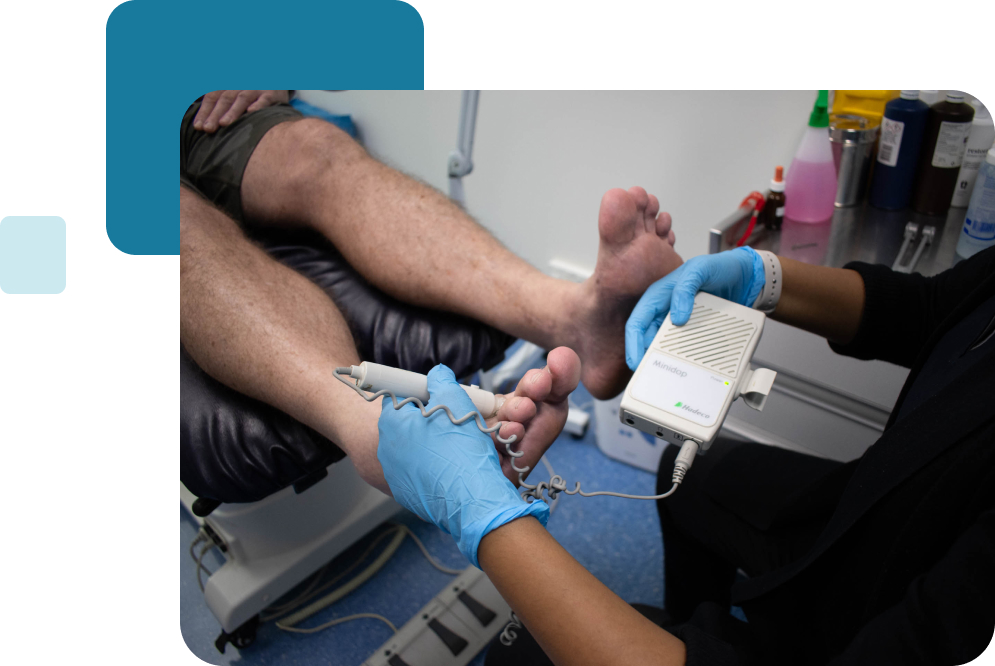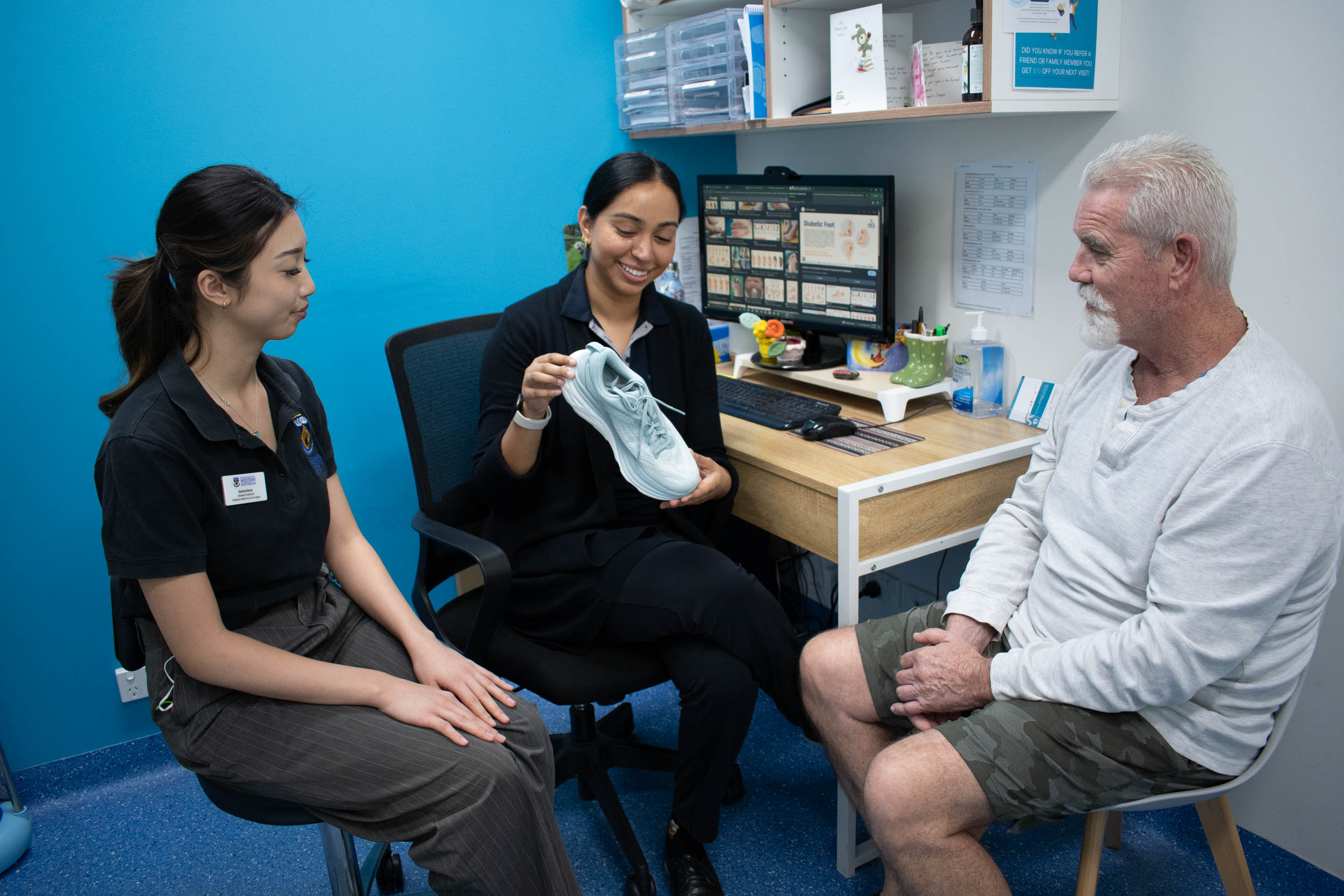99/103 Harris St, Bicton WA 6157, Australia
.png)
A foot neuroma is a nerve irritation that typically occurs between the toes, most commonly between the third and fourth toes. It can cause discomfort in the ball of the foot, tingling, or the sensation of stepping on a small object.
Our physiotherapists and podiatrists provide assessment, education and treatment strategies to help you understand your symptoms and learn ways to manage discomfort in daily life.
A neuroma can develop from several contributing factors, including:
Footwear that is tight, narrow or compressive
High-impact activities such as running or dancing
Structural factors like flat feet or high arches
Repetitive pressure on the forefoot
Book 10 mins complimentary discussion. Your clinician will assess your movement, footwear and foot mechanics to identify what may be contributing to your symptoms.


Treatment is tailored based on your presentation. A typical approach may include:
Understanding your symptoms, footwear habits and activity load helps guide your management plan.
Recommendations on supportive, comfortable footwear that reduces pressure on the affected nerve.
Guidance on modifying daily activities, exercise or training loads to reduce irritation.
Strengthening, mobility and foot-control exercises to support more comfortable movement patterns.
Where appropriate, gentle techniques may be used to reduce surrounding tissue tension.
Podiatrists may recommend customised or off-the-shelf inserts to distribute pressure more evenly across the forefoot.
Your clinician will discuss the options most suitable for you.
What are the common symptoms of a foot neuroma?
People often report tingling, numbness, or discomfort in the ball of the foot, sometimes described as a “pebble under the foot” sensation.
Do I need imaging to confirm a neuroma?
Not always. A physiotherapist or podiatrist can usually assess your symptoms clinically. Imaging may be recommended if further information is needed.
What should I bring to my appointment?
Comfortable clothing, your regular footwear, and any previous scans or reports if you have them.
Is a neuroma the same as a tumour?
No. A neuroma in the foot is a thickening or irritation of the nerve, not a tumour.
Can I keep exercising if I have a neuroma?
You may still be able to exercise, but your clinician will advise on modifications to reduce irritation and manage load safely.
Will I need orthotics?
Not everyone requires orthotics. Your podiatrist will assess your foot mechanics and discuss whether inserts may be helpful for your situation.
How long does treatment take?
This depends on your symptoms, activity levels and contributing factors. Your clinician will outline a plan that suits your needs.
Are certain shoes better for managing a neuroma?
Footwear with adequate width, cushioning and support may reduce pressure on the irritated nerve. Your clinician can provide personalised recommendations.
Do I need a referral?
No referral is required unless you are using a funding pathway that specifies one.
Can a neuroma come back?
Responses vary from person to person. Your clinician will guide you on long-term management strategies to help reduce irritation.
Is treatment covered by private health insurance?
Private health rebates may apply depending on your specific policy. Check with your insurer for details.
